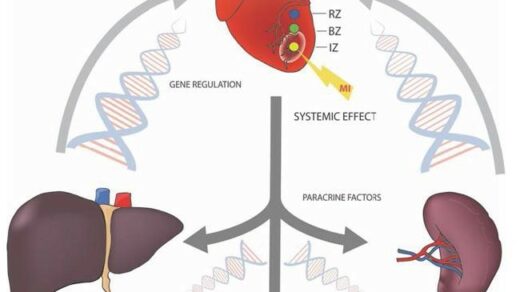Researchers found that diverse geroprotectors differently affect a mechanism linking cellular aging to cellular quiescence in budding yeast.

The Trending With Impact series highlights Oncotarget publications attracting higher visibility among readers around the world online, in the news, and on social media—beyond normal readership levels. Look for future science news about the latest trending publications here, and at Oncotarget.com.
—
The mechanisms of cellular aging and cellular quiescence have been preserved throughout evolution. Cellular quiescence is a temporary state of cell cycle arrest and low metabolic activity. Importantly, quiescent (Q) cells maintain the ability to quickly activate and re-enter the cell cycle (in response to the appropriate stimuli). Recent research has shown that cellular quiescence may play a role in cellular aging.
In a 2020 study, research findings indicated that the rate at which yeast cells age is determined by a complicated program that affects 1) when a state of quiescence is entered, 2) how long quiescence is maintained and 3) when the cell exits quiescence. Researchers found that caloric restriction (CR) (a geroprotective intervention) appears to remodel this program, and this remodeling could be responsible for the CR-dependent delay of yeast chronological aging. Thus, the researchers considered the question: Does a single mechanism exist which links cellular aging to cellular quiescence?
“We have introduced a new yeast model for studying mechanisms linking cellular aging to cellular quiescence [109, 110].”
In a new study, researchers (Anna Leonov, Rachel Feldman, Amanda Piano, Anthony Arlia-Ciommo, Jennifer Anne Baratang Junio, Emmanuel Orfanos, Tala Tafakori, Vicky Lutchman, Karamat Mohammad, Sarah Elsaser, Sandra Orfali, Harshvardhan Rajen, and Vladimir I. Titorenko) from Concordia University, Montreal, used a new yeast model to test their hypothesis that a mechanism exists linking cellular aging to cellular quiescence. On July 28, 2022, their research paper was published in Oncotarget and entitled, “Diverse geroprotectors differently affect a mechanism linking cellular aging to cellular quiescence in budding yeast.”
Caloric Restriction Delays Cellular Aging by Quiescence Program Changes
“Our hypothesis posits that this mechanism integrates four different processes, all of which are initiated after yeast cells cultured in a medium initially containing glucose consume it.”
In a 2017 study, researchers cultured yeast in a medium initially containing 0.2% glucose (CR). After consuming the glucose, the cells began to differentiate into quiescent and non-quiescent cell populations. Quiescent cells that developed in these cultures had different buoyant densities and could be separated into high- and low-density sub-populations.
CR delayed yeast chronological aging by causing specific changes in four processes of a cellular quiescence program. Process one consists of a cell-cycle arrest and leads to the formation of high-density Q cells. Process two is the conversion of high-density Q cells into low-density Q cells. Processes three and four are the fast or slow decline of quiescence in low- or high-density Q cells, respectively. The researchers believe that these processes could converge into a mechanism that links cellular aging to cellular quiescence in chronologically aging budding yeast.
How do Other Geroprotectors Change the Quiescence Program?
“Here, we tested our hypothesis by assessing how four different geroprotectors influence the four processes that could link cellular aging to cellular quiescence.”
In the current study, the team’s first objective was to compare the effects of four different geroprotectors on the four quiescence processes. CR, lithocholic acid (LCA) and the single-gene deletion mutations tor1Δ and ras2Δ all delay chronological aging and extend the longevity of S. cerevisiae. Geroprotectors other than CR were examined in each of the four processes. They found that these geroprotectors differently affected processes one and two and decelerated processes three and four. Two ways of slowing down yeast chronological aging were determined by testing the four geroprotectors. One way was specific to CR and the ras2Δ mutation, and the other way was characteristic for LCA and the tor1Δ mutation.
“We selected CR and LCA to investigate the two ways different geroprotectors postpone yeast chronological aging by differently targeting the mechanism potentially linking cellular aging to cellular quiescence.”
They hypothesized that the abilities of CR and LCA to regulate the four processes of a cellular quiescence program are the same used to slow yeast chronological aging. Their next objective was to test the hypothesis that specific metabolic Q cell traits can contribute to the different effects of CR and LCA on processes one and two and their similar effects on processes three and four. Two CR-specific changes in metabolic traits of Q cells were assessed: increased intracellular concentrations of glycogen and trehalose within Q cells.
“Therefore, we assessed the contributions of the increased intracellular concentrations of glycogen and trehalose within Q cells to the CR- and LCA-driven changes in cellular quiescence and to the CR- and LCA-promoted slowdowns of yeast chronological aging.”
Cellular Aging Delayed in Two Different Ways
In summary, study results showed that both CR and the ras2Δ mutation stimulated the development of high-density Q cells (process 1) and decelerated yeast chronological aging by arresting the cell cycle in early G1, whereas LCA and the tor1Δ mutation did so by arresting the cell cycle in late G1. Both CR and the ras2Δ mutation promoted an age-related conversion of high-density Q cells into low-density Q cells (process 2), whereas LCA and the tor1Δ mutation postponed this conversion. All four geroprotective interventions delayed a fast aging-associated deterioration in the quiescence of low-density Q cells (process 3) and postponed a slow aging-associated decline in the quiescence of high-density Q cells (process 4).
It is possible that the different ways these geroprotectors regulate the first two processes do not contribute to the aging-delaying capabilities of these geroprotectors. However, the researchers in this study believe there are two different ways of employing geroprotector-dependent changes in the first two processes that decelerate yeast chronological aging. They also found that a rise in trehalose within quiescent yeast contributes to chronological aging and quiescence maintenance.
“The second line of evidence for the existence of a mechanism linking cellular aging to cellular quiescence comes from our observation that an increase in intracellular trehalose within Q cells is an essential contributor to both chronological aging and quiescence maintenance in S. cerevisiae.”
Conclusion
“This study and our previously published data [109] provide conclusive evidence for the existence of a mechanism that links cellular aging to cellular quiescence in chronologically aging S. cerevisiae. The mechanism integrates processes 1, 2, 3 and 4 discussed above in the text and schematically depicted in Figures 1 and 6.”
Collectively, these data provide conclusive evidence for a mechanistic link between cellular aging and cellular quiescence. In the future, the researchers aim to better understand how to target the cellular quiescence program in order to delay cell aging and the onset of aging-related diseases.
“In conclusion, because the mechanisms of cellular aging and cellular quiescence are evolutionarily conserved [1, 3, 62, 66], this study makes an important next step toward the understanding of how the knowledge-based targeting of cellular quiescence can be used for slowing down cellular and organismal aging and for delaying the onset of aging-associated diseases.”
Click here to read the full research paper published by Oncotarget.
ONCOTARGET VIDEOS: YouTube | LabTube | Oncotarget.com
—
Oncotarget is an open-access journal that publishes primarily oncology-focused research papers in a continuous publishing format. These papers are available at no cost to readers on Oncotarget.com. Open-access journals have the power to benefit humanity from the inside out by rapidly disseminating information that may be freely shared with researchers, colleagues, family, and friends around the world.
For media inquiries, please contact media@impactjournals.com.



